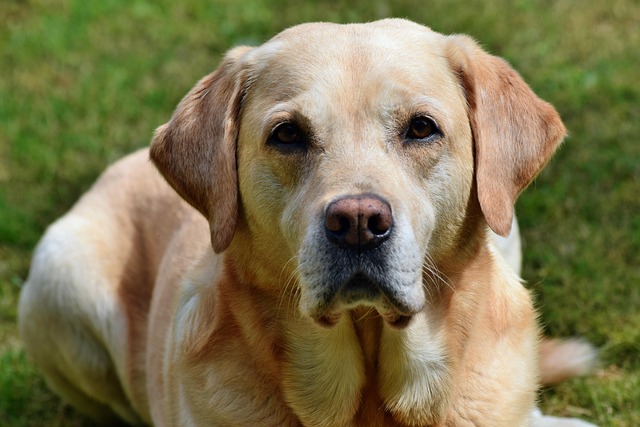
What is glaucoma in a dog?
You might notice your dog squinting more at mealtime or avoiding bright sunlight—these small changes could be early signs of a serious eye condition.
So, you’ve just brought home that bag of premium air-dried dog food – crunchy nuggets packed with nutrients. Your pup’s nose is already twitching with excitement! But then you pause, holding the scoop: "Wait... do I need to add water to this?" It’s a super common question, especially for new pup parents navigating the maze of dog food options. Let’s break it down simply, step by step.
First, the science bit. Air-dried food sits between kibble (fully baked dry) and raw (fully moist). The gentle drying process preserves more nutrients than high-heat kibble cooking, but removes most moisture – typically leaving it around 5-15% moisture content. Compare that to your dog’s natural prey diet (about 70% water!) or canned food (75-85%). While dogs can eat it dry, adding water taps into some neat biological perks. Rehydrating it kickstarts enzymatic activity, making nutrients slightly easier to absorb. More crucially, it boosts your dog’s daily water intake. Many dogs, especially those gobbling dry food or living in air-conditioned homes (hello, Arizona summers!), don’t drink enough. Chronic mild dehydration can strain kidneys over time. Adding water is like giving their insides a helpful hydration nudge.
Okay, how to do it right? It’s easy! Start by checking your specific brand’s guidelines – some might suggest it, others don’t require it. Here’s a safe bet: Use lukewarm or room-temperature water (never hot!). Pour just enough to barely cover the food in the bowl – think a 1:4 water-to-food ratio. Let it sit for 2-5 minutes. You want the nuggets softened but not mushy soup. Think "gravy-coated," not "soggy cereal." This makes it easier to chew, especially for seniors or tiny breeds like Chihuahuas. Watch your dog – if they lap up every drop, great! If they leave a puddle next time, use slightly less water. Pro Tip: If Fido’s a fast eater prone to bloat (common in deep-chested breeds like Great Danes), adding water can actually slow them down as they lick up the moisture.

Now, let’s talk responsible ownership – because how we care for our dogs impacts everyone. While you’re mastering mealtime, remember those key legal and community duties. In most US states, keeping your dog’s rabies vaccination current isn’t just smart; it’s the law. That certificate from your vet? Keep it handy! And when you head out for that post-dinner walk in your Seattle apartment complex or Central Park, always carry biodegradable poop bags. Scooping isn't optional; it’s basic courtesy (and often carries fines if skipped!). Got a pup still learning leash manners? Focus on positive reinforcement training. Ditch the old-school choke chains or yelling. Reward calm behavior near other dogs or squirrels with tiny treats or praise. This builds trust and is the gold standard backed by animal behaviorists. Remember that neighbor in your apartment building sensitive to noise? Training a solid "quiet" cue using rewards prevents barking complaints. It’s all about being a good neighbor and a great dog parent.
Ultimately, adding water to air-dried food isn’t usually mandatory, but it’s a simple, vet-approved trick with solid benefits: better hydration, easier digestion, and potentially slower eating. Try it for a week and see if your pup enjoys the texture change and licks the bowl cleaner. Pay attention to their energy and water bowl habits. Pairing this mindful feeding with responsible ownership – updated vaccines, prompt scooping, and kind, reward-based training – is how we build happy, healthy dogs and harmonious communities. Now, grab that water pitcher and see if your furry food critic gives it a paws-up!

You might notice your dog squinting more at mealtime or avoiding bright sunlight—these small changes could be early signs of a serious eye condition.

Let’s set the scene: It’s a sweltering Phoenix afternoon—105°F outside—and you rushed your 2-year-old Lab mix, Cooper, on a quick walk to “get it over with.”

Let’s get real: You’re in your Miami apartment, watching your 3-year-old Corgi, Loki, struggle to climb the stairs to your second-floor unit.

Many dog owners brush off occasional scratching as just “dog behavior,” but persistent itching often signals something more—like a food allergy.

You might first notice your dog scratching more than usual—chewing at their paws until the fur looks thin, or rubbing their face against the couch nonstop.

Let’s be real: You’re standing in your Chicago apartment, watching your 3-year-old Beagle, Max, huff and puff just to climb onto the couch.